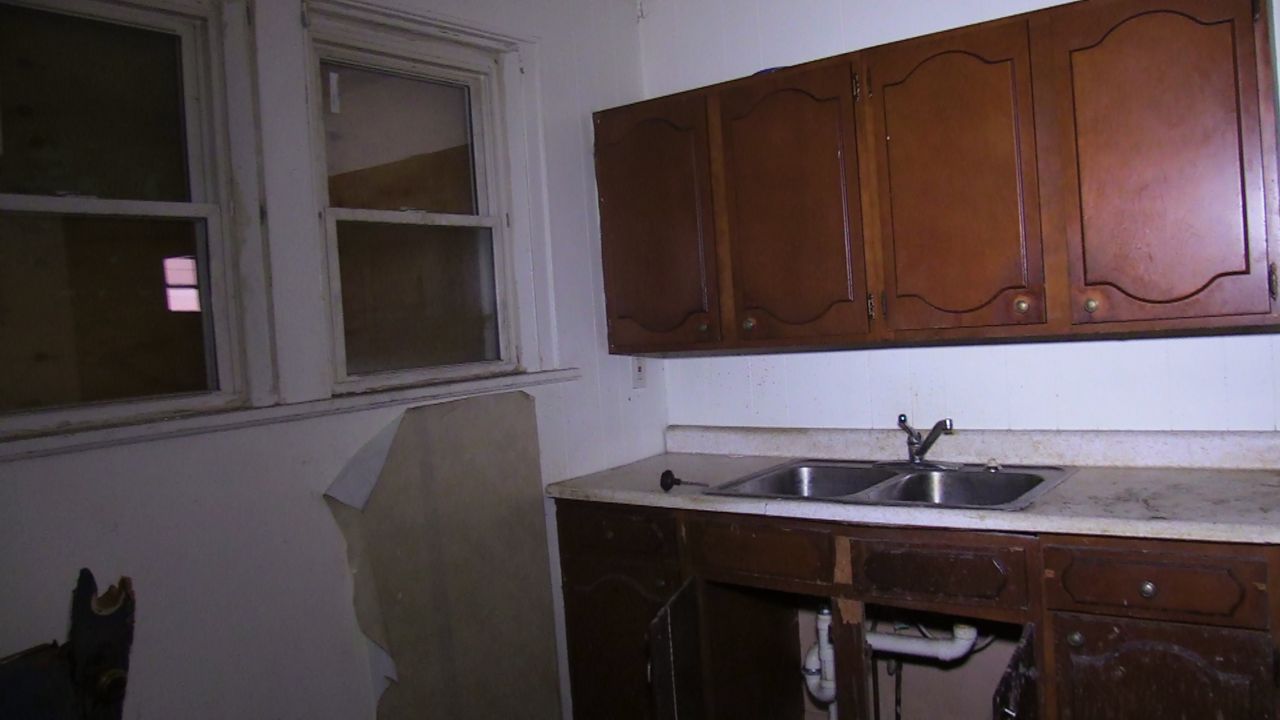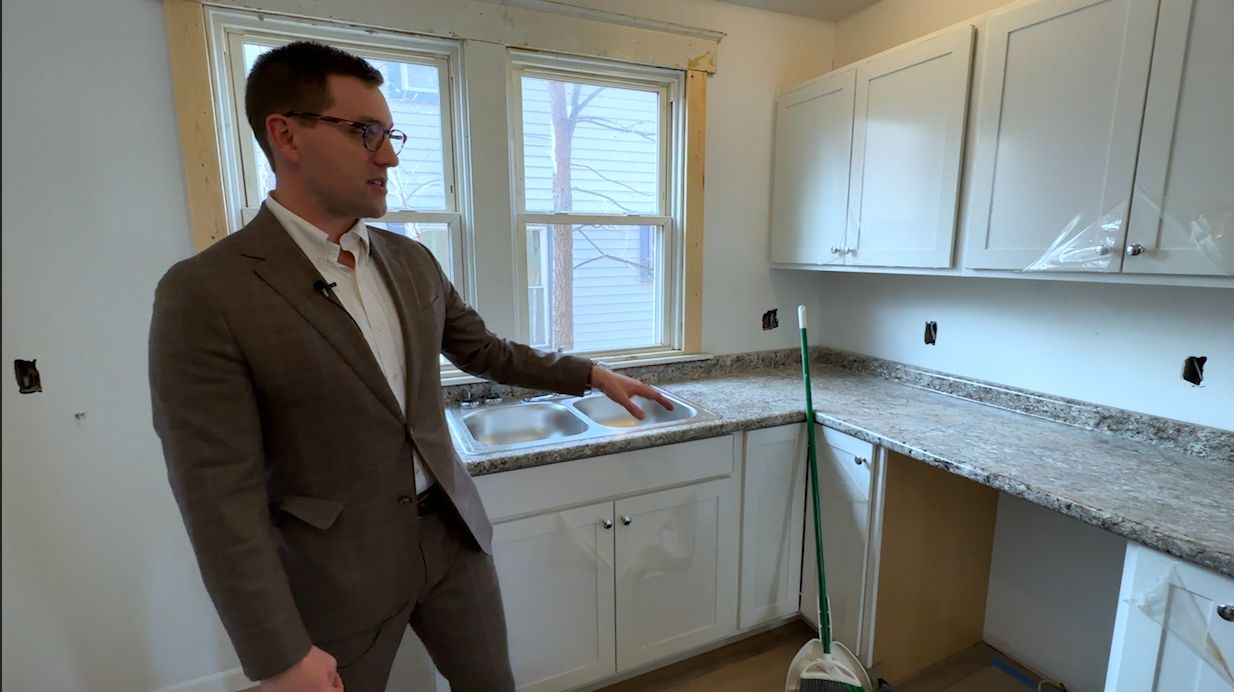CINCINNATI – More than a year into its multi-million dollar effort to convert nearly rental properties into single-family homes, Cincinnati’s Port Authority reports the path for its new tenants to become homeowners has become far clearer.
In Dec. 2021, the Port announced a $14.5 million investment into 194 houses scattered throughout Hamilton County. Named the CARE (Creating Affordable Real Estate) Home project, Philip Denning, the executive vice president of the Port Authority, said the massive undertaking started with a large learning curve, as the agency got to know its new houses and the tenants who live there.
The opportunity came from a massive receivership sale from an investor with 2,000 homes in three U.S. cities. Denning said the Port had to act quickly to secure the sale and come up with a plan, though they didn’t get the chance to see any of the properties or meet any of its tenants until closing in January.
That’s when Denning said the Port learned roughly 60 homes were vacant, many uninhabitable, and even those homes with tenants required major restoration work because of deferred maintenance, though in many cases, the tenancy data the Port was provided was inaccurate or not up to date.
“For the occupied properties, it’s been a year of understanding where they’re at and the property issues they have,” Denning said. “If you own 2,000 properties in a county, each with their own systems, it’s really hard to understand what’s broken, what’s aging, what needs to be fixed or invested in.”
Fixing the fixer-uppers
A year into those efforts, the Port’s been able to get an accurate sense of the state of all 194 houses, 133 are renter-occupied, 55 are vacant and in need of repairs while six are vacant but renovated and ready for sale.
Those issues have been different for each home, but many required new wiring, appliances and roofing.

“A fair bit of the ductwork had to be replaced as well,” Denning said. “They’re not taken care of and they just fall apart, especially the parts that you can’t see.”
According to Denning, that’s fairly common for properties owned through large, out-of-state investors, which have increasingly been chipping away at the affordable single-family housing stock in Cincinnati.
“Over 4,000 properties, single-family homes were purchased by institutional investors for the purpose of permanent rentals in the past 5 or 6 years,” he said.
The trend isn’t unique to Cincinnati, with Pew reporting institutional investors bought nearly a quarter of all single-family homes sold nationwide.
Denning believes this is driving up prices in Cincinnati and locking families out of homeownership, one of the major drivers of generational wealth.
“That’s just a really big change inside of neighborhoods and inside the ability for families to build wealth and have some family stability,” he said.
That’s why Denning said the Port had to take this opportunity to get houses back in the hands of Hamilton County families.
"We issued bonds on our balance sheet to take the risk to acquire them to essentially cut off the arm of that institutional investment grab at these kinds of properties,” he said. “Because we’re interested in not just being a landlord forever but in putting these into homeownership.”

Building homeowners
Working in Neighborhoods is serving as the Port’s community partner, working directly with the tenants to get them prepared for that transition.
Hope Wilson, the director of operations of housing programs at WIN, said the organization has been in touch with the Port since before the CARE homes sale and started outreach to tenants as early as they could. She set up meetings in the neighborhoods where many of these homes are concentrated, helping explain the rent-to-own opportunity to tenants and shared a little of the process they’d undertake over the next several months or even years.
“We talked about the advantages and disadvantages of being a homeowner and the responsibilities and then what will it take for me to become a homeowner,” she said.
WIN will provide mandatory programming and counseling for all interested tenants to ensure they’re prepared for the undertaking and Wilson said the organization will work with them from start to finish and beyond, ensuring they’re able to find stability as homeowners.
“If they are committed to becoming a homeowner and work with the process, they’re going to be given the time they need so they can achieve that goal,” she said.
Sister Barbara Busch, WIN’s executive director, said the program came as a surprise to many of the tenants. The Port has never done anything like this before, and many of these tenants never expected an opportunity to become homeowners.
Still, she said she’s optimistic about the response thus far. Busch said there are a few dozen renters already interested in the process and some of the first tenants may be able to close on their homes by the end of the summer. She expects that will have a ripple effect, not only among the other CARE homes' residents but throughout their neighborhoods.
“Our ability then to put that back into homeownership puts a whole street back into getting excited again about their home,” she said.
Starting to sell
As for the rest of the CARE homes, Denning said the Port will work with those who plan to remain renters for as long as they want to stay in their homes, but the goal is to get these houses into the hands of local owners.
Forty properties will finish their renovations and go on the market in 2023. Dennings said they’ll sell for roughly $120,000 to $150,000, based on their size and the cost of renovations.
“That’s a home that doesn’t come for sale these days,” he said. “They’re almost impossible to find.”
According to Denning, there will be a homeownership requirement as a part of every sale and the Port is targeting families and first-time homebuyers.
“The last thing we want is for them to go back to investors,” he said.
The entire process could take years, but Dennings said when the first sale is finalized, he’ll know the massive undertaking was worthwhile.
“It’s really a moral imperative for the Port to make this change,” he said.



